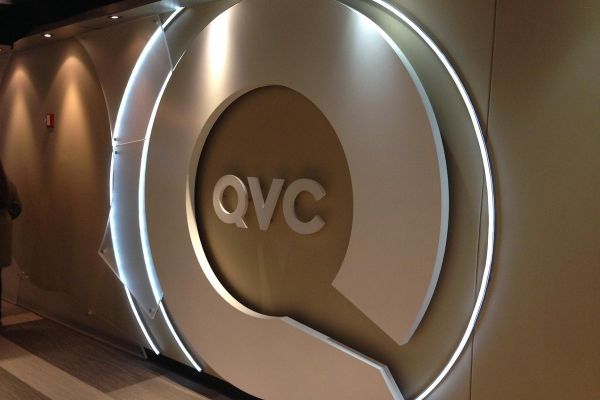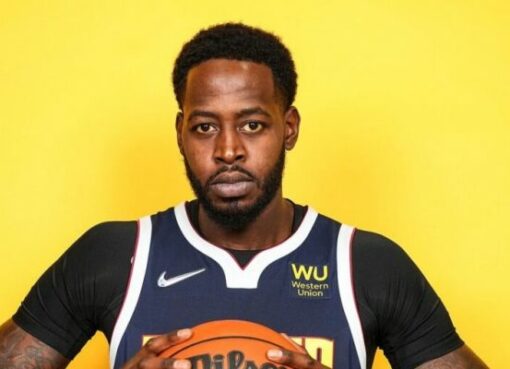Welcome to our article on the fascinating history of QVC, one of the leading names in the world of home shopping.
As you delve into the story of this iconic brand, you’ll discover how it all began, who its founder is, and how it has evolved over the years. So, let’s dive right in and explore the captivating journey of QVC!
Key Takeaways:
Page Contents
- QVC was founded by Joseph Segel in 1986 in West Chester, Pennsylvania.
- It is a flagship shopping channel owned by Qurate Retail Group.
- The company broadcasts to more than 350 million households in seven countries.
- QVC has expanded its reach through joint ventures and sister channels in various countries.
- Under the leadership of Barry Diller, QVC introduced new initiatives and expanded its divisions.
QVC’s Founding and Television Launch
QVC, short for “Quality Value Convenience,” was founded on June 13, 1986, by Joseph Segel and a group of investors that included Ralph Roberts. This marked the beginning of a revolutionary new way of shopping from the comfort of one’s own home.
On November 24, 1986, QVC launched its television channel, bringing its unique shopping experience directly into people’s living rooms. The launch featured a lineup of talented program hosts, including Kathy Levine, John Eastman, Ellen Langas, Bob Bowersox, and Cindy Briggs-Moore.
The channel initially aired live broadcasts from 7:30 p.m. until midnight ET on weekdays and operated 24 hours a day on weekends, providing ample opportunities for customers to tune in and discover the latest products. However, the demand for QVC’s offerings was so high that the company extended its live programming to 24/7/364 in January 1987, becoming a full-time shopping destination.
QVC’s television launch revolutionized the way consumers shopped, offering convenience, value, and a wide range of products in a captivating and engaging format.
Competitor Buy-Out Attempts
In its early years, QVC made several buy-out attempts and acquisitions to strengthen its position in the TV shopping industry.
In July 1989, QVC acquired the Cable Value Network, founded by Irwin L. Jacobs. This acquisition allowed QVC to expand its reach and gain a larger customer base.
Another significant buy-out attempt occurred in March 1991 when QVC tried to acquire the Burbank-based Shop Television Network. Although the initial attempt was rejected, QVC successfully acquired the channel in May 1991. This acquisition brought with it 4 million subscribers and a license to carry JCPenney brands on-air, further solidifying QVC’s presence in the industry.
In March 1992, QVC made a bid to acquire Home Shopping Network (HSN), one of its main competitors. However, the talks faltered when QVC decided to pursue a bid for Paramount in the fall of 1993. Although the acquisition of HSN did not materialize, QVC’s eagerness to expand its market share through strategic acquisitions demonstrates its commitment to growth and dominance in the industry.
| Year | Acquisition | Details |
|---|---|---|
| 1989 | Cable Value Network | Acquired Cable Value Network, founded by Irwin L. Jacobs |
| 1991 | Shop Television Network | Acquired Shop Television Network with 4 million subscribers and a JCPenney brand license |
| 1992 | Home Shopping Network | Bid to acquire Home Shopping Network, talks faltered |
Barry Diller and QVC
In 1992, Barry Diller, former chair of Fox Inc., purchased a stake in QVC and took over as the company’s chairman and CEO in January 1993, succeeding Joseph Segel. Under Diller’s leadership, QVC underwent various changes and developments.
One of the notable initiatives during Diller’s tenure was the introduction of a second channel called Q2 in an attempt to target a younger and more price-conscious audience. However, Q2 was eventually shelved in 1996.
Diller also ventured into acquisitions to solidify QVC’s position in the industry. In 1993, he made a bid to acquire Paramount but lost to Viacom. Despite this setback, QVC continued to expand its divisions. In 1994, the company changed its name to QVC, Inc. and introduced new divisions like Q Direct for infomercials and QVC Interactive for online shopping.
Diller’s Impact on QVC
Barry Diller’s leadership brought about significant changes and advancements for QVC. His expertise and experience in the media industry helped propel QVC’s growth and enhance its presence in the evolving retail landscape.
During his time at QVC, Diller played a crucial role in establishing the company as a leading player in the TV shopping industry. The acquisitions and expansions under his leadership ensured QVC’s continuous evolution and adaptation to changing consumer preferences.
With Diller at the helm, QVC thrived as a pioneer in televised home shopping and solidified its position as a trusted brand in the retail industry.
QVC’s Acquisitions under Barry Diller
| Year | Acquisition |
|---|---|
| 1993 | Attempt to acquire Paramount, lost to Viacom |
| 1994 | Change of name to QVC, Inc. |
| 1994 | Introduction of Q Direct division for infomercials |
| 1994 | Introduction of QVC Interactive division for online shopping |
Worldwide Reach
Under the leadership of Barry Diller, QVC expanded its horizons beyond the borders of the United States, establishing a remarkable global presence. Leveraging strategic partnerships and joint ventures, QVC sought to bring its unparalleled shopping experience to millions of households worldwide.
One of the key moves towards international expansion was the partnership with Grupo Televisa in 1993. This collaboration allowed QVC to penetrate the markets of Mexico, Spain, and Latin America, introducing its unique blend of quality, value, and convenience to new audiences.
Another significant milestone came with the joint venture formed between QVC and British Sky Broadcasting (BSkyB). Together, they launched a 24-hour electronic retailing service that catered to customers in the United Kingdom, Ireland, and Europe (excluding the Iberian Peninsula). This expansion solidified QVC’s position as a global retail powerhouse.
Today, QVC’s international footprint spans multiple countries, including Germany, Austria, Japan, the UK, Ireland, and Italy. With its widespread reach, QVC continues to connect with millions of households worldwide, delivering an exceptional shopping experience right to their screens.
QVC’s Rise and Expansion
During the late 1990s and early 2000s, QVC experienced a significant rise in popularity and underwent notable expansion. This growth was fueled by various strategic initiatives and innovations that solidified QVC’s position as a leading player in the television shopping industry.
One key milestone in QVC’s journey was its acquisition by Comcast and TCI’s spin-off company Liberty Media in 1995. This partnership provided QVC with additional resources and support to further propel its expansion efforts.
In 1994, QVC introduced a unique retail concept called the QVC Local. This customized television studio on wheels allowed QVC to bring its shopping experience directly to communities across the United States. The QVC Local enabled QVC to connect with customers in a more personal and localized manner, fostering a stronger sense of community.
To discover new and innovative products, QVC embarked on a nationwide product search known as the “Quest for America’s Best: 50 in 50 Tour” in 1995. This tour allowed QVC to showcase the creativity and craftsmanship of small businesses across the country, providing them with a platform to reach a larger audience.
To further diversify its retail offerings, QVC tested a retail concept by opening a store at The Mall of America in 2000. This store allowed customers to experience QVC’s products and shopping experience in a physical setting, complementing its televised sales.
Despite its growth and success, QVC had its fair share of legal challenges. In 2004, QVC faced a lawsuit alleging racial discrimination in its hiring practices. The company vehemently denied the allegations and implemented measures to promote diversity and equality within its workforce. Additionally, QVC faced an FTC lawsuit over misleading claims about dietary supplements, which further emphasized the importance of transparency and accuracy in its marketing practices.
The Mall of America Store
| Year | Key Events |
|---|---|
| 1995 | Acquisition by Comcast and TCI’s spin-off company Liberty Media |
| 1994 | Introduction of the QVC Local |
| 1995 | “Quest for America’s Best: 50 in 50 Tour” |
| 2000 | Opening of a store at The Mall of America |
| 2004 | Legal challenges – racial discrimination lawsuit and FTC lawsuit over misleading claims about dietary supplements |
Move Towards E-Commerce
In 2005, QVC experienced a change in leadership as CEO Douglas Briggs retired, making way for Michael A. George to take the helm. Under George’s guidance, QVC embarked on a rebranding journey in 2007, aiming to merge curated products with engaging shopping experiences. This strategic shift marked the company’s move towards e-commerce as it recognized the evolving consumer preferences and the rapid advancements in technology.
One of the significant steps taken by QVC towards e-commerce was the launch of its internet shopping site, iQVC, in 1996. This pioneering move allowed QVC to extend its reach beyond television broadcasts and embrace the vast potential of online shopping. With the introduction of iQVC, customers could now conveniently browse and purchase products from the comfort of their own homes through QVC’s user-friendly website.
QVC further adapted to the changing digital landscape by expanding its online presence through the development of websites, mobile apps, and social media platforms. These strategic initiatives aimed to provide customers with a seamless shopping experience across multiple digital touchpoints, ensuring convenience and accessibility.
QVC Rebranding
The 2007 QVC rebranding was a significant turning point in the company’s journey towards e-commerce. As part of the rebranding efforts, QVC underwent a logo redesign to present a fresh and modern image to its growing customer base.
The new branding reflected QVC’s commitment to offering curated products and engaging shopping experiences that catered to the evolving needs and preferences of its customers. By combining the power of technology with personalized product offerings, QVC aimed to create a more immersive and interactive shopping environment, both online and on television.
QVC’s bold move towards e-commerce under the leadership of Michael A. George and the rebranding efforts paved the way for the company’s continued success in the digital era.
| Year | Milestone |
|---|---|
| 1996 | Launch of iQVC, QVC’s internet shopping site |
| 2007 | QVC rebranding, focusing on curated products and engaging shopping experiences |
Qurate Retail, Inc.
QVC is now part of Qurate Retail, Inc., a Fortune 500 company that includes six leading retail brands: QVC, HSN, Ballard Designs, Frontgate, Garnet Hill, and Grandin Road. Qurate Retail is focused on providing a more human way to shop and is the largest player in video commerce (eCommerce), which encompasses video-driven shopping across various platforms. Qurate Retail reaches millions of customers through TV channels, streaming services, websites, mobile apps, social pages, and in-store destinations.
Conclusion
Throughout its remarkable journey, QVC has grown from its humble beginnings under the visionary leadership of Joseph Segel to becoming a prominent force in the shopping industry as part of the Qurate Retail Group. As one of the pioneers in televised home shopping, QVC has embraced innovation and consistently expanded its global reach.
With its commitment to quality, value, and convenience, QVC has successfully adapted to the changing landscape of retail, including the rise of e-commerce. Under the stewardship of Barry Diller and now as a key component of Qurate Retail, QVC continues to offer a distinct shopping experience to millions of customers.
QVC’s curated product selection, engaging shopping experiences, and diverse retail brands have solidified its position as a leader in the industry. From the development of its second channel, Q2, to the expansion into international markets, QVC’s journey has been characterized by growth, acquisitions, and a relentless pursuit of excellence.
As the world of retail evolves, QVC remains at the forefront, blending the best of television and e-commerce to provide a human-centric shopping experience. With its rich history and commitment to customer satisfaction, QVC is poised to continue its success and deliver a remarkable shopping experience for years to come.
Also Read: Who Owns Transformers? – Transformers Company History




